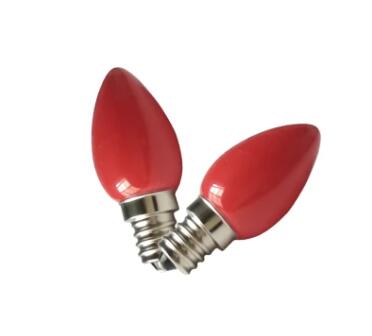Illuminating Sustainability: The Eco-Friendly Journey of LED Bulbs from Use to Recycle
2023-12-22
Introduction:
As the world pivots towards sustainable living, the environmental impact of everyday products, including lighting, is under scrutiny. LED bulbs, hailed for their energy efficiency and longevity, play a pivotal role in the quest for greener alternatives. In this blog, we delve into the eco-friendly journey of LED bulbs, exploring their recyclability and the overall environmental footprint associated with their production and disposal.
1. Energy Efficiency: A Bright Start Towards Sustainability
The environmental friendliness of LED bulbs begins with their unparalleled energy efficiency. LED technology converts a higher percentage of electrical energy into visible light, wasting minimal energy as heat. This efficiency translates to reduced electricity consumption, lowering the carbon footprint associated with energy production when compared to traditional incandescent bulbs.
2. Longevity and Reduced Waste: The Glow of Extended Lifespan
One of the standout features of LED bulbs is their impressive lifespan. LED bulbs typically last much longer than traditional incandescent or compact fluorescent bulbs, reducing the frequency of replacements. This longevity not only saves consumers money but also minimizes the amount of waste generated from discarded bulbs, contributing to a more sustainable approach to lighting.
3. Materials and Manufacturing: Streamlining Environmental Impact
The production of LED bulbs involves the use of various materials, including semiconductors, metals, and plastics. However, the overall environmental impact is generally lower than that of traditional bulbs. LED manufacturing processes are becoming increasingly streamlined, with manufacturers adopting cleaner and more sustainable practices, such as reducing hazardous materials and energy consumption during production.
4. Recyclability of LED Bulbs: Navigating the Disposal Process
Recycling is a critical aspect of sustainable living, and LED bulbs can indeed be recycled. The components of LED bulbs, including metals like aluminum and copper, as well as recyclable plastics, can be reclaimed and reused. However, the recycling process for LED bulbs is not as widespread or standardized as it is for some other materials, making it essential for consumers to explore local recycling options.
5. Hazardous Materials: Addressing Concerns
While LED bulbs contain fewer hazardous materials compared to traditional bulbs (which often contain mercury), some LED bulbs may contain trace amounts of materials that need careful disposal. It's crucial to follow local regulations for electronic waste disposal and recycling to ensure that potentially hazardous components are handled responsibly.
6. E-Waste Challenges: Bridging the Recycling Gap
Electronic waste, or e-waste, is a global challenge, and LED bulbs, being electronic devices, contribute to this issue. As LED technology advances, efforts are underway to improve recycling infrastructure and processes for electronic components. Collaborative initiatives between manufacturers, recycling facilities, and consumers are essential to bridge the gap and establish efficient e-waste recycling systems.
Conclusion:
LED bulbs, with their energy efficiency, extended lifespan, and recyclability, are undeniably a step in the right direction towards a more sustainable lighting future. While challenges such as e-waste management persist, ongoing efforts within the industry and responsible consumer choices can further enhance the eco-friendliness of LED lighting. As we continue to embrace environmentally conscious practices, the glow of LED bulbs becomes not just a beacon of energy efficiency but also a symbol of our collective commitment to a greener, more sustainable planet.



